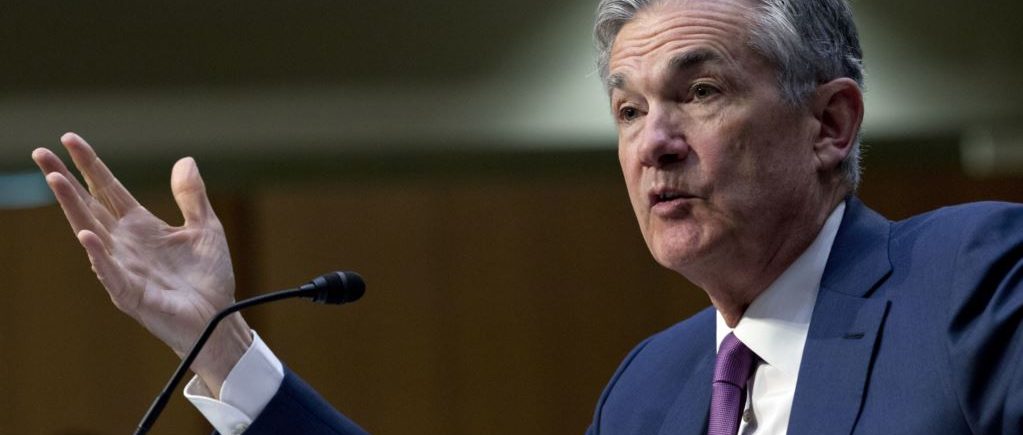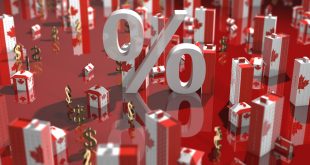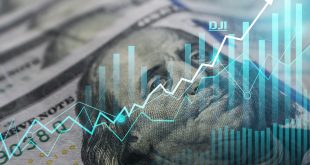The Federal Reserve sent to the financial markets multiple indications on Wednesday immediately after concluding the two-day policymaking meeting.
The US Federal Reserve announced on Wednesday that the FOMC had agreed to leave the Federal Funds target range unchanged at 0.0-0.25%, in line with expectations.
Moreover, the pace of the taper of the bank’s bond-buying programme will be doubled from mid-January to $30B per month, with a similar pace of taper likely appropriate in the months thereafter, though the pace of taper could be adjusted if warranted by a change in economic conditions. If the Fed does reduce its bond-buying by $30B per month until the programme is fully unwound, net asset purchases will fall to zero before the end of March 2022.
Fed has run an ultra-easy monetary policy since the beginning of the COVID pandemic, and this stimulus is coming to a close sooner, making aggressive policy moves in response to hot inflation. So, the US central bank said it will accelerate the reduction of its monthly bond purchases.
The Fed will be buying $60 billion of bonds each month starting January 2022, half the level prior to the November taper and $30 billion less than it had been buying in December. The Fed was tapering by $15 billion a month in November, doubled that figure in December, then will accelerate the reduction further through 2022.
After that wraps up, in late winter or early spring, the central bank expects to start raising interest rates, which were held steady at this week’s meeting.
Projections released Wednesday indicate that Fed officials see as many as three rate hikes coming in 2022, with two in the following year and two more in 2024.
“Economic developments and changes in the outlook warrant this evolution of monetary policy, which will continue to provide appropriate support for the economy,” Chairman Jerome Powell said at his post-meeting news conference.
The Federal Open Market Committee’s moves, approved unanimously, represent a substantial adjustment to policy that has been the loosest in its 108-year history. The post-meeting statement noted the impact from inflation.
“Supply and demand imbalances related to the pandemic and the reopening of the economy have continued to contribute to elevated levels of inflation,” the statement said.
The committee sharply ratcheted up its inflation outlook for 2021, pushing it to 5.3% from 4.2% for all items and to 4.4% from 3.7% excluding food and energy. For 2022, the expectation is now 2.6% for headline and 2.7% for core, both up from September.
At the same time, the unemployment rate projection for 2022 came down to 4.3% for 2022 from 4.8% in September. The statement noted that “job gains have been solid in recent months, and the unemployment rate has declined substantially.”
However, members came out on the hawkish side of policy moves, with members solidly leaning toward rate hikes. The “dot plot” of individual members rate expectations indicated that just six of the 18 FOMC members saw fewer than three increases next year, and no members saw rates staying where they are now, anchored near zero.
That vote came even as the statement reaffirmed that the Fed’s benchmark overnight borrowing rate would stay near zero “until labor market conditions have reached levels consistent with the Committee’s assessments of maximum employment.”
The committee reduced its forecast for economic growth this year, seeing GDP rising 5.5% for the full 2021, compared to the 5.9% indicated in September. Officials also revised their forecasts in subsequent year, raising 2022 growth to 4% from 3.8% and lowering 2023 to 2.2% from 2.5%.
The statement again noted that developments with the COVID pandemic, in particular with variants, pose risks to the outlook.
Both policy moves came in response to escalating inflation, which is running at its highest level in 39 years for consumer prices. Wholesale prices in November jumped 9.6%, the fastest on record in a sign that inflation pressures are becoming more ingrained and broad-based.
Fed officials long have stressed that inflation is “transitory,” which Powell has defined as unlikely to leave a lasting imprint on the economy. He and other central bank leaders, as well as Treasury Secretary Janet Yellen, have stressed that prices are booming due to pandemic-related factors such as extraordinary demand that has outstripped supply but ultimately will fade.
However, the term had become far from accurate and the post-meeting statement eliminated it. Powell telegraphed the move during congressional testimony last month, saying “it’s probably a good time to retire that word and try to explain more clearly what we mean.”
For the Fed, under Jerome Powell, tightening policy now marks a dramatic pivot off a policy enacted just over a year ago. Known as “flexible average inflation targeting,” which meant it would be content with inflation a little above or below its long-held 2% target.
Under the new terms of a program also known as quantitative easing, the Fed would accelerate the decline of its holdings until it is no longer adding to its portfolio. That would bring QE to an end in the spring and allow the Fed to raise rates anytime after. The Fed has said it likely would not raise rates and continue buying bonds simultaneously, as the two moves would work at cross purposes.
Powell likely will face questioning at his news conference about the future of the balance sheet, which has expanded by nearly $3.9 trillion since the early pandemic days.
 Noor Trends News, Technical Analysis, Educational Tools and Recommendations
Noor Trends News, Technical Analysis, Educational Tools and Recommendations





